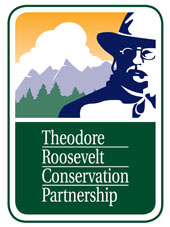$38.8 billion invested annually in natural resources conservation provides the foundation for a strong, healthy outdoor economy.

WASHINGTON –-(Ammoland.com)- A new study provides a revealing look at America’s economic stake in conservation, totaling the total public and private investments in fish, wildlife and natural resources conservation at $38.8 billion per year – monies that, once spent, circulate through the economy and stimulate an impressive $93.2 billion in economic activity.
“The Conservation Economy in America,” commissioned by the National Fish and Wildlife Foundation and conducted by Southwick Associates, reports the economic impacts of direct investments into conservation: the jobs, tax revenues and other dividends produced by state, federal and private conservation funding.
The study’s implications regarding the role of natural resource conservation in the broader U.S. economy are considerable. For example, Outdoor Industry Association, the trade association for companies in the outdoor recreation business, has commissioned a number of groundbreaking studies that examine consumer spending in the pursuit of outdoor recreation activities.
When these new conservation-focused figures are combined with OIA data, as well as with similar data for historic preservation, the relationship is clear: Our $38.8 billion investment in conservation forms the underpinnings of an economic boon for the US through subsequent spending related to outdoor recreation and historic preservation, which are largely dependent on sound natural resources stewardship.
The study has commanded the attention of America’s Voice for Conservation, Recreation and Preservation, a coalition of more than 1,200 organizations representing tens of millions of citizens with diverse political backgrounds who have united in support of conservation, recreation and historic preservation programs as a way to create jobs and improve the economy.
The AVCRP coalition drew data from the new study and combined existing information to showcase some noteworthy findings:
- $1.7 trillion = total economic impact attributed to natural resource conservation, outdoor recreation and historic preservation in the United States, $1.6 trillion of which is derived from consumer dollars spent on outdoor recreation activities as it circulates through the economy as quantified by OIA. These rounds of spending also create additional impacts:
- $211 billion = federal, state and local tax revenue generated annually from this sustainable economy;
- $12.8 million = number of jobs supported by these three sectors;
- $877 billion = combined contribution to the United State Gross Domestic Product from these three sectors; and,
- $33.3 billion = total annual federal spending on natural resource conservation, outdoor recreation and historic preservation that helps generate this $1.7 trillion economy.
The Conservation Economy In America: Direct Investments And Economic Contributions
“Conservation-focused investments impact our nation’s economy in ways that cannot be ignored,” said Whit Fosburgh, president and CEO of the Theodore Roosevelt Conservation Partnership. “If the government wishes to prioritize spending on areas that provide substantial return on investment, conservation, outdoor recreation and historic preservation should be at the top of their lists.”
“Conservation has always been a strong economic driver, and this new data reinforces that fact,” said Ducks Unlimited CEO Dale Hall. “When Americans pursue their favorite outdoor pastimes each year, they support wildlife conservation but also are strengthening our economy to a much greater degree than they may realize. Investing in conservation is a great deal for the American taxpayer.”
“The benefits of wild places in America are clear from both the economic and environmental perspective,” said The Wilderness Society Counselor and AVCRP co-chair Bill Meadows. “Federal investments made in conservation are returned to all Americans, supporting millions of jobs, improving our infrastructure, encouraging economic investment in local communities, and keeping our air breathable, our water clean and our wildlife and outdoor spaces protected – all of which make our nation unique and prosperous.”
“Investments in nature produce a great return, and the bottom line is clear – America’s natural resources are a critical part of our national economy,” said Mark R. Tercek, president and CEO of The Nature Conservancy. “Our environmental health is directly related to our economic well-being, among other benefits. As a result, even in this time of budget austerity, the federal government can and should address the federal deficit while still investing in critical conservation programs.”
Read TRCP’s 2013 Sportsmen’s Conservation Priorities.
Inspired by the legacy of Theodore Roosevelt, the TRCP is a coalition of organizations and grassroots partners working together to preserve the traditions of hunting and fishing.
